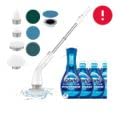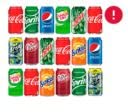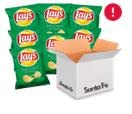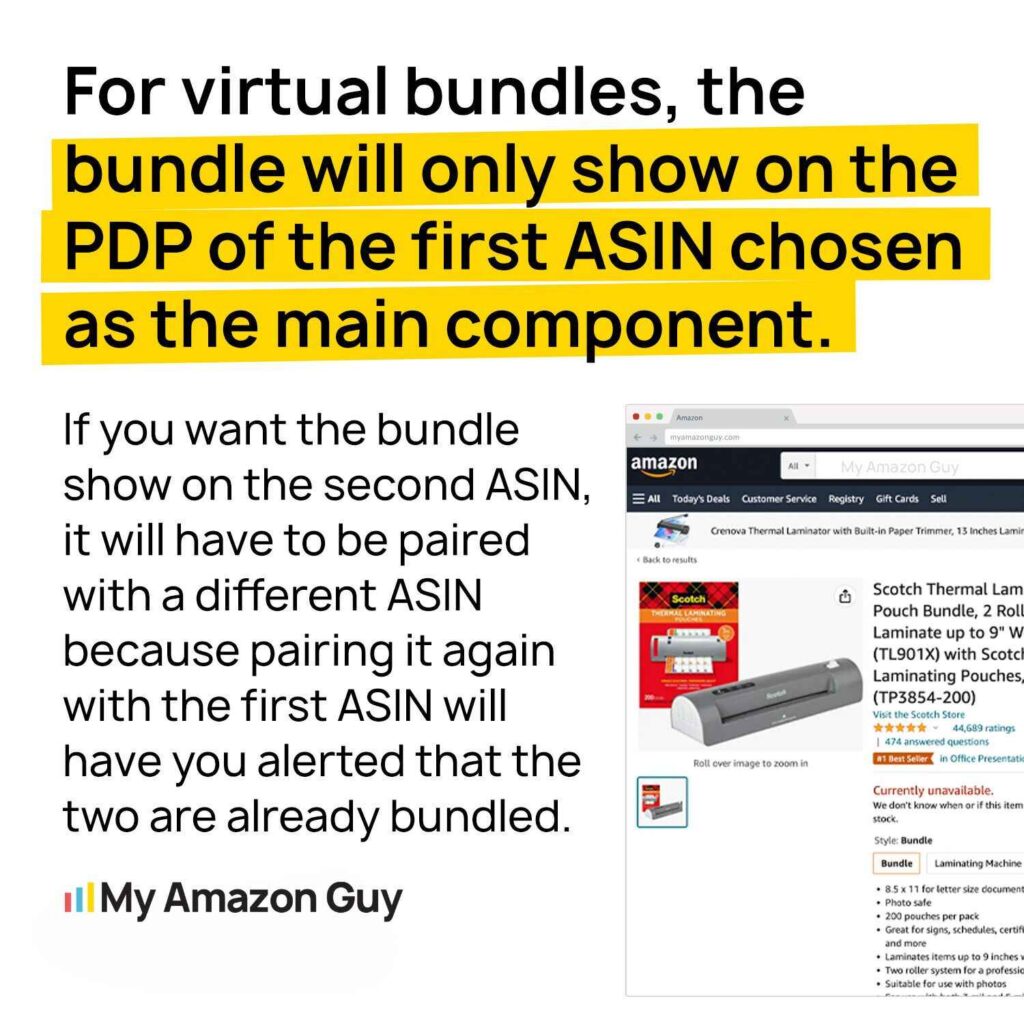
To create Amazon product bundles that comply with the new policy, sellers must source products from original manufacturers or obtain authorization to repackage, ensuring all products in a bundle belong to the same brand and are packaged accordingly.
Amazon’s recent update to its product bundling policy has caused significant frustration among sellers. Many express worries about how this change will severely limit product bundling in key categories like grocery and health & beauty.
Sellers of bundles like snack boxes, which rely on multi-brand items will experience the impact on their profitability. Some have faced account suspensions for similar violations before the policy was even officially announced.
To navigate these challenges, sellers should stay informed about the latest policy updates, carefully review their current product bundles, and explore alternative strategies to maintain their sales and profitability.
NBER WORKING PAPER SERIESProduct bundling can boost profits by up to 30%
Key Points of the Updated Amazon Bundle Policy
The policy update was first announced on October 14, 2024 and Amazon just released a note to clarify what changes sellers must comply with when they create Amazon product bundles.
This update aims to ensure that bundled consumables are authentic and safe, given their potential for ingestion or application on skin, especially by vulnerable groups like children and pets.
Key Requirements:
- Only bundles packaged by the original manufacturer or brand are allowed.
- Sellers can repackage products into bundles only with explicit authorization from the brand owner or manufacturer.
- All products in a bundle must belong to the same brand and be branded accordingly.
Exemptions:
If you have a Letter of Authorization (LOA) from the brand owner, you can reconfigure and repackage their products, as long as they belong to the same brand and are branded accordingly.
Bundles in the gift basket category can include products from multiple brands, as long as they are packaged for gifting.
Effective Dates:
- Immediate compliance for new bundles.
- Enforcement for existing bundles begins January 1, 2025.
Non-Compliance Notifications:
Sellers will be notified via email and the Account Health dashboard about non-compliant bundles that are at risk of suppression.
Does This Policy Update Affect Sellers' Ability to Create Amazon Product Bundles?
Yes, the new Product Bundling Policy significantly impacts sellers’ ability to create Amazon product bundles. The policy restricts bundling across multiple brands unless authorized, reshaping how sellers in key categories like grocery, health, and beauty operate.
Who Is Affected?
- Resellers
Those bundling products from different manufacturers face immediate restrictions. Snack boxes and similar multi-brand bundles are no longer compliant unless the seller has proper authorization.
- Private Label Sellers
Sellers who relied on combining various brands under their private labels will now have limited bundling options. They may lose access to tools like A+ Content if bundling compliance isn’t met.
- CPG Brands
These changes benefit CPG brands by giving them greater control over their bundles and pricing. Brands can eliminate unauthorized resellers, improve customer experience, and maintain stronger profit margins.
Key impacts
- Sellers have less freedom to create innovative and profitable bundles.
- Existing multi-brand bundles might become difficult to sell, leading to potential losses.
- Inconsistent enforcement of the policy has caused frustration among sellers.
Compliant Action Plan to Create Amazon Product Bundles
Review Your Listings
Review your current listings to pinpoint bundles that include products from multiple manufacturers or unbranded items. Develop strategies to liquidate non-compliant inventory, such as running special promotions or discounts.
Obtain Necessary Authorizations
Obtain LOAs from brand owners or manufacturers to repackage and bundle their products. Prioritize creating bundles using products from a single manufacturer to minimize compliance risks.
Create Amazon Product Bundles
Here are some guidelines to follow based on the examples of valid and invalid bundles from Amazon:
- Every item in the bundle should be products from the same brand, packaged by the original manufacturer

- Sell bundles that were created by the manufacturer for the brands they own.


- Do not bundle branded products with generic or non-branded items, even if the generic items are accessories or complementary to the branded products. Only manufacturer-packaged bundles with this configuration will be considered valid.


- Do not create bundles that are not packaged by the original manufacturer, such as those that contain brands from various manufacturers.

- Ensure that all bundle configurations have the original packaging provided by the manufacturer.

- Do not repackage products from the same brand into new configurations; only sell bundles that are packaged as a single item by the original manufacturer, without altering the original packaging.

- Bundles must consist of complementary items.
- Bundles should be listed in the category of the highest-priced item, with exceptions for BMVD and Video Games.
- Avoid including generic products in bundles.
- Brand bundles according to the highest-priced item.
- Treat multi-packs as single products, not bundles.
- List variations as part of a parent product, not as separate bundles.
- Match existing bundles exactly or create a new listing.
- Once created, bundles cannot be modified; create a new listing for changes.
- Assign a unique standard product identifier (UPC) to the entire bundle; do not use individual product identifiers for the bundle.
Watch this video to learn how to create UPC barcodes for Amazon:
Monitor Account Health Closely
Keep an eye on your Amazon Seller Central account for any notifications regarding non-compliant listings.
Alternative Solution For Creating Bundles
Bundles are product offerings that combine two or more items into a single ASIN, including variety packs, kits, and similar products, regardless of the name used. This policy does not apply to virtual bundles.
Only Brand Representatives in Brand Registry can access virtual bundles. These sellers must be responsible for selling the brand on Amazon. Visit the Brand Benefit Eligibility page to gain access.
To create a virtual bundle:
- ASINs must be part of a registered brand.
- Must have active FBA inventory in new condition.
- Available only in the US store.
- Excludes gift cards, digital products, and used ASINs.
- Bundles must contain 2-5 ASINs, each sold individually.
Choose one ASIN as the main component, which determines search categorization. This cannot be changed after creation. The bundle price is the sum of component prices, with dynamic updates and optional “always-on” discounts.

While navigating Amazon’s evolving policies for custom and virtual bundles can be tricky, partnering with an experienced Amazon agency or professional brand managers can be your secret weapon. Their expertise can make all the difference, from analyzing which ASINs to bundle for maximum impact to optimizing product listings and monitoring bundle performance.






